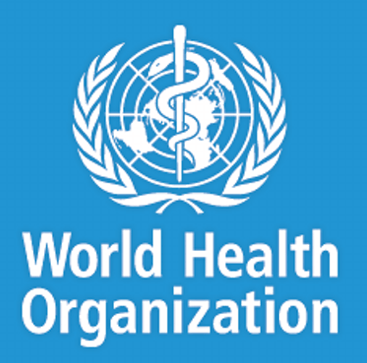Estimated 25 million unsafe abortions occur each year globally – WHO
 Twenty five million unsafe abortions (45 percent of all abortions) occurred every year between 2010 and 2014, according to a new study by World Health Organisation (WHO) and the Guttmacher Institute.
Twenty five million unsafe abortions (45 percent of all abortions) occurred every year between 2010 and 2014, according to a new study by World Health Organisation (WHO) and the Guttmacher Institute.
Majority of unsafe abortions, or 97 percent, occurred in developing countries in Africa, Asia and Latin America, a statement copied to the Ghana News Agency said.
Dr Bela Ganatra, lead author of the study and a scientist in the WHO Department of Reproductive Health and Research said “Increased efforts are needed, especially in developing regions, to ensure access to contraceptives and safe abortion.
“When women and girls cannot access effective contraceptives and safe abortion services, there are serious consequences for their own health and that of their families. This should not happen. But despite recent advances in technology and evidence, too many unsafe abortions still occur, and too many women continue to suffer and die.”
Classifying abortion safety
The new study provides estimates on safe and unsafe abortions globally. For the first time, it includes sub-classifications within the unsafe abortion category as less safe or least safe.
According to the study, the distinction allows for a more understanding of the different circumstances of abortions among women who are unable to access safe abortions from a trained provider.
When abortions are performed in accordance with WHO guidelines and standards, the risk of severe complications or death is negligible it said.
Approximately 55 percent of all abortions from 2010 to 2014 were conducted safely, which means they were performed by a trained health worker using a WHO-recommended method appropriate to the pregnancy duration.
Almost one-third (31percent) of abortions were “less safe,” meaning they were either performed by a trained provider using an unsafe or outdated method such as “sharp curettage”, or by an untrained person albeit using a safe method like misoprostol, a drug that can be used for many medical purposes, including to induce an abortion.
It said about 14 percent were “least safe” abortions provided by untrained persons using dangerous methods, such as introduction of foreign objects and use of herbal concoctions.
Deaths from complications of unsafe abortion were high in regions where most abortions happened in the least safe circumstances.
Complications from “least-safe” abortions can include incomplete abortion (failure to remove all of the pregnancy tissue from the uterus), haemorrhage, vaginal, cervical and uterine injury, and infections.
On restrictive laws associated with high rates of unsafe abortions, the study also looks at the contexts that commonly result in women seeking unsafe abortions, including countries’ laws and policies on abortion, the financial cost of accessing safe abortion services, the availability of safe abortion services and trained health providers, and societal attitudes toward abortion and gender equality.
In countries where abortion is completely banned or permitted only to save the woman’s life or preserve her physical health, only 1 in 4 abortions were safe; whereas, in countries where abortion is legal on broader grounds, nearly 9 in 10 abortions were done safely.
The study noted that restricting access to abortions does not reduce the number of abortions.
Most abortions that take place in Western and Northern Europe and North America are safe.
It said these regions also have some of the lowest abortion rates. And that most countries in these regions also have relatively permissive laws on abortion; high levels of contraceptive use, economic development, and gender equality; as well as high-quality health services – all factors that contribute to making abortion safer.
“Like many other common medical procedures, abortion is very safe when done in accordance with recommended medical guidelines and that is important to bear in mind,” says Dr Gilda Sedgh, co-author of the study and principal research scientist, Guttmacher Institute.
“In the high-income countries of North America and Western and Northern Europe, where abortion is broadly legal and health systems are strong, the incidence of unsafe abortions is the lowest globally.”
Among developing regions, the proportion of abortions that were safe in Eastern Asia (including China) was similar to developed regions. In South-Central Asia, however, less than 1 in 2 abortions were safe.
In Latin America, only 1 in 4 abortions were safe, though the majority were categorized as “less safe,” as it is increasingly common for women in the region to obtain and self-administer medicines like misoprostol outside of formal health systems. This has meant that this region has seen fewer deaths and fewer severe complications from unsafe abortions. Nevertheless, this type of informal self-use of medication abortion that women have to resort to secretly does not meet WHO’s safe abortion standards.
Unsafe abortion occurs when a pregnancy is terminated either by persons lacking the necessary skills/information or in an environment that does not conform to minimal medical standards, or both.
To prevent unintended pregnancies and unsafe abortions, countries must make supportive policies and financial commitments to provide comprehensive sexuality education; a wide range of contraceptive methods, including emergency contraception; accurate family planning counselling; and access to safe, legal abortion.
Provision of safe, legal abortion is essential to fulfilling the global commitment to the Sustainable Development Goal of universal access to sexual and reproductive health (target 3.7).
WHO provides global technical and policy guidance on the use of contraception to prevent unintended pregnancy, on safe abortion, and the treatment of complications from unsafe abortion.
Earlier this year, WHO and the Population Division of the United Nations Department of Economic and Social Affairs launched a new, open-access database of laws, policies and health standards on abortion in countries worldwide.
The database aims to promote greater transparency of abortion laws and policies, as well as to improve countries’ accountability for the protection of women and girls’ health and human rights.
Source: GNA
